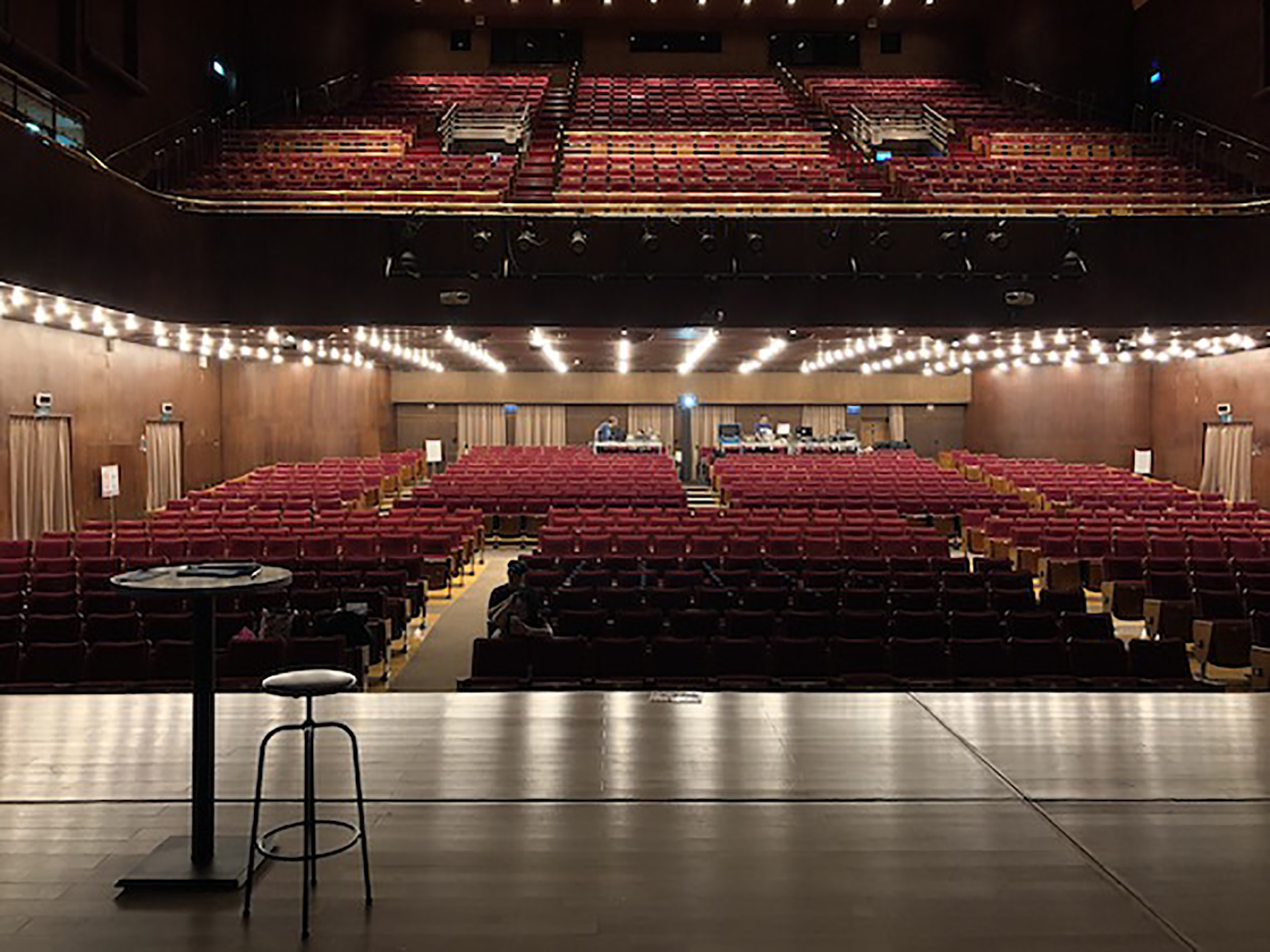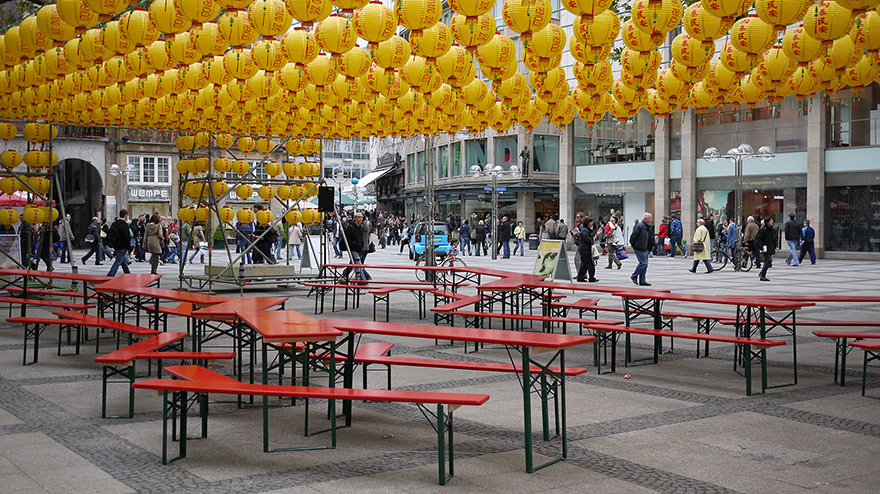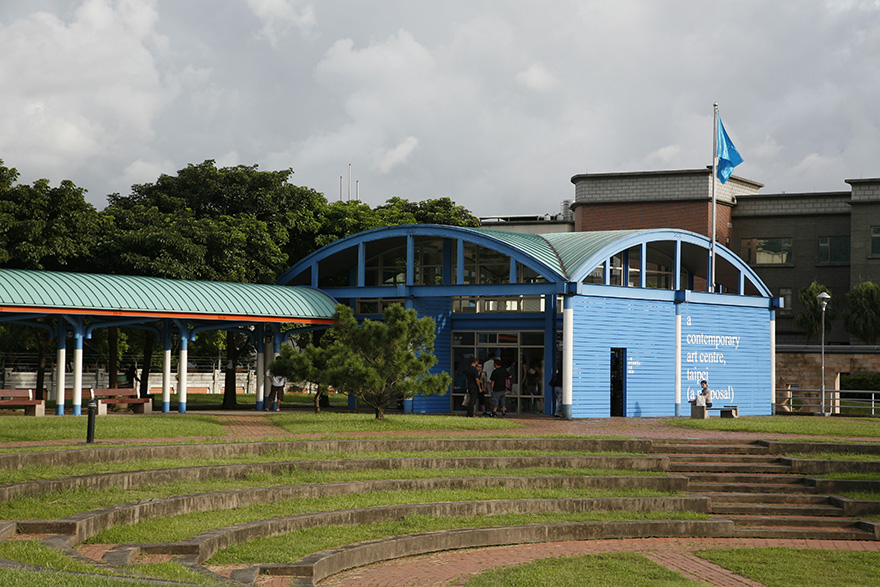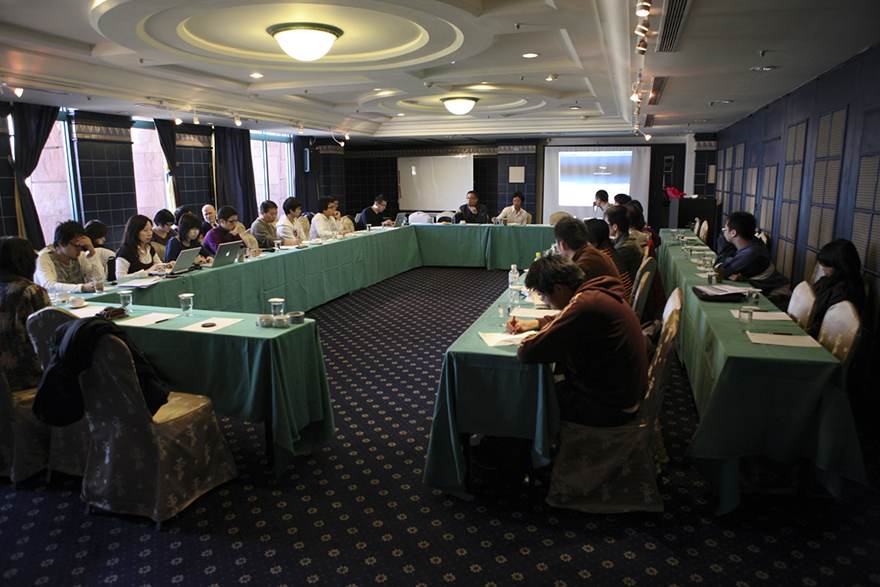GAT 022 Jun Yang〈楊俊〉
Refusing to get used to the new normal

In 2021 COVID-19 continues to impact us across the globe, having drastically changed our society from what it was before. In an online talk held on September 23, 2020 during the pandemic, we invited Jun Yang, an artist based in Vienna, Taipei, and Yokohama to share his creative process. Yang questions the context of the public and society through various mediums. An excerpt follows.
Edited by Ishii Jun’ichiro (ICA Kyoto)
An optimistic point of view
The whole talk will be called “Refusing to get used to the new normal”, or “The curtain call at the circus”. So, today’s talk is not a finished lecture, it’s more like thoughts of the past, and therefore it’s not a coherent presentation with a single message.
One of the presentations would have sounded very optimistic. Like me, believing in Art, and trying to give Art or our practice, all the hopes and imagined possibilities we all teach and preach. I would have said, Art is important and relevant to society. Perhaps as an artist, I’m quite naive, but maybe and possibly this naivety is a bit of a utopian hope and that gives me the strength to keep on doing what I do.
I would have said, we, as artists, we need something like this belief, because it gives me the feeling or the hope that I can think the world differently, that we can change the world through Art.
Public domain
I would have given an example of a work that I did a few years ago called « Things We Have in Common ». It was created in 2010, with this church behind in the city of Dortmund (Germany) as part of the 2010 European Culture Capital.
This church in this area is in the middle of the city center, around shopping areas, pedestrian shopping streets. I was interested in this relationship between this church and the public area and the shopping area. And we know today in cities that a lot of public space becomes private space, like the cafe, the restaurant etcetera, becomes bigger and extends.
So, on my site visit, I realized there was no opportunity to sit, no opportunity to rest without consumption. If you look historically, like paintings in the 17th century, these churches not only had religious functions, but they were also meeting places. They were like sheltered public spaces in this sense. So, I instead of being invited to do something inside, I proposed to use and to think define the space outside.

« Things We Have in Common » 2010
These lanterns, lanterns that are used in Taiwan to mark temples, but they also mark the public space for the temple, not only the space inside but the space leading to these temples. Since I’m not religious, in both cases, I invited or I created this installation there, suddenly, it offered people a place to sit or rest and without any consumption or no particular rules that we created.
Open dialogue
In context of optimism and what Art might do or in context to society or public spaces, I like to talk about the second project that I would have given. The title is « a contemporary art centre taipei – a proposal ». The project was initiated within the Taipei Biennial in 2008. And it dealt with the conditions of contemporary art in Taipei at that time, but also thinking what a space in whatever form what role a space could play.
So some of the questions were like, what is the background of exhibition spaces? And what are the conditions of exhibiting in Taiwan? Who owns or controls what space with what interest or intention like the city, the government, a company, a gallery, etcetera. And the main question is what is the role of contemporary art? What’s contemporary art’s position in relationship to capital, to the bureaucratic system, to the official culture policy, to communities, to society, or authorities in Taipei or in Taiwan or in a country.

« A Contemporary Art Centre in Taipei – A Proposal » 2008
The project was carried out in mainly three parts. During the biennial, we created a pavilion outside of the museum where the event, where the official biennial is, and we adapted this building like an office building, and hosted many parties outside, student gatherings.

« A Contemporary Art Centre in Taipei – A Proposal » 2008
And the second part was a conference that I wanted to create. But I didn’t create a classical conference, but I created a closure. I invited 47 people, to all come with me on a weekend holiday to a hotel, I rented the entire hotel.
We invited 47 people, but all of protagonists of the arts circle, most active artists, curators etcetera, would all come together and stay for one weekend and discuss contemporary art. No officials, no commercial people… And if the Art – active art society would come together and discuss what could we change? It’s a thought experiment.
And then the end of the project after almost nine months, I became for this art magazine, the guest editor, and I took these magazines and the chance to sum up the project and all the thoughts and all the possibilities.
And so certainly the most important thing about all these three aspects was that they were different platforms of a dialogue, of discussion, and on the conditions of contemporary art at that time in one city or in one country. And they were all in a public realm. In an open society, to have the chance, and also to have a platform where you can express all these opinions and critiques together in a public situation, I think was extremely important.
Art in times of crisis
I don’t see myself as an activist or as an art activist. But certainly, even doing my other installations or creating a film or writing a performance, I strongly believe that art should at no point be affirmative, and should have some critical stance or carry some spirit of change.
In another talk I was thinking to give I would have written a different take on this story, where it was about the ethics and the hypocritical morals in contemporary art. Art as a luxury commodity, art as a fig leaf, and whitewashing. And the artist as a henchman. Art depending on the mercy of donors and private money. It was events such as art in the context of Aichi Triennale 2019 and its closure and its self-censorship and above all arts’ weak position in the conservative nationalistic Japanese society. It would have been a talk about doubting the power of Art.
As I live also in Yokohama, in Japan, it is very difficult for me to see any position that contemporary art takes up in this society. Because I see very little support, especially governmental support or funding here. I’m originally from Central Europe, from Austria, so I strongly believe in the necessity of cities, of governments to provide funding without any or little interference or politics. I’m not a believer in the idea that the free market regulates art, and I don’t even believe in the idea that our free market could support art.
In the past years, when you walk through biennials or see major exhibition, it’s inevitable that you notice the increase of works that are supported, sponsored or paid by private foundations or commercial galleries. And to be honest, it’s difficult to see without any of the support today to be in one of these bigger exhibitions.
I’m sure not everybody in the audience will agree with me but anyway, but I see the tendencies with quite worries and discomfort because it adds to the choices that the curator makes, or to the independence of the spaces or festivals or events or museums. It adds to their choices and interference and an influence by the market.
But also, of course, we see in European countries where culture money has been cut, we see conservative and right-wing parties pushing forward with their agenda, and dragging the mainstream into a less open, more closed social society and where art has absolutely no space. This would be a more pessimistic talk and I was wondering which one should I give. But then I thought about the students that I’m working with in Kyoto in this global seminar course that I’m invited with. And I decided to talk with them in the context of art in times of crisis. We talked about ethics, morals and censorship that lies behind the glamorous chic art world.
The crisis refers not only to our world situation of COVID-19 but also crisis of contemporary art in general.
The curtain call at the circus
With all these examples and our current situation,
I asked myself do I really want to talk only about these examples given?
Are they relevant – right now?
Certainly I hope they are but what am I concerned about them now?
And for the past months – I had to reflect on my own existence and life. For more than 20 years I have been part of this contemporary art circus. I live in three cities (Vienna, Taipei and Yokohama) and my life was filled with moving back and forth – I was constantly in transit.
But perhaps this is the moment to STOP – to halt the circus and look back and reflect on the privileges – the highs but also the bumps, the lows and the downs – we all had to appreciate the times in the spotlight and the sun but also remember the moments in the shadow and on the dark side.
So for the last 10 years as well as pursuing my art career – I have been also planning my exit – it accumulated in my book project « the monograph project » and it will accumulate in the upcoming exhibition in Taipei at Kuandu Fine Arts museum, MOCA Taipei and TKG+ gallery project space three solo exhibitions at the same time – not as the accumulation of sunlight – but exhibition as reflection and exhibition as an exit strategy.
* The talk ends with Yang reading from a new performance piece he created with the artist Matsune Michikazu reaction to the COVID-19 pandemic for the Taipei Arts Festival 2020 called « Dear Friend ».
Jun Yang〈楊俊〉
Jun Yang is an artist based in Vienna, Taipei and Yokohama. His works encompass various mediums – including, film, installation, performance and projects in the public spaces. Previous exhibitions include the Biennial of Sydney, the Gwangju Biennale; the Taipei Biennial, the Liverpool Biennial, the Venice Biennale, and the Manifesta 4. Jun Yang has always been interested in the overlapping and intersection of contemporary visual arts, business and politics. This can be found in many of his gastronomic and institutional projects, such as the gfzk garten, the café and the hotel Paris Syndrom, or a contemporary art centre, taipei (a proposal), Taipei Biennial 08, which led to the founding of the Taipei Contemporary Art Center. He is also co-founder of the restaurant/bar ra’mien, and the Café Leopold at the Leopold Museum in Vienna.
* This talk was held online on September 23, 2020.